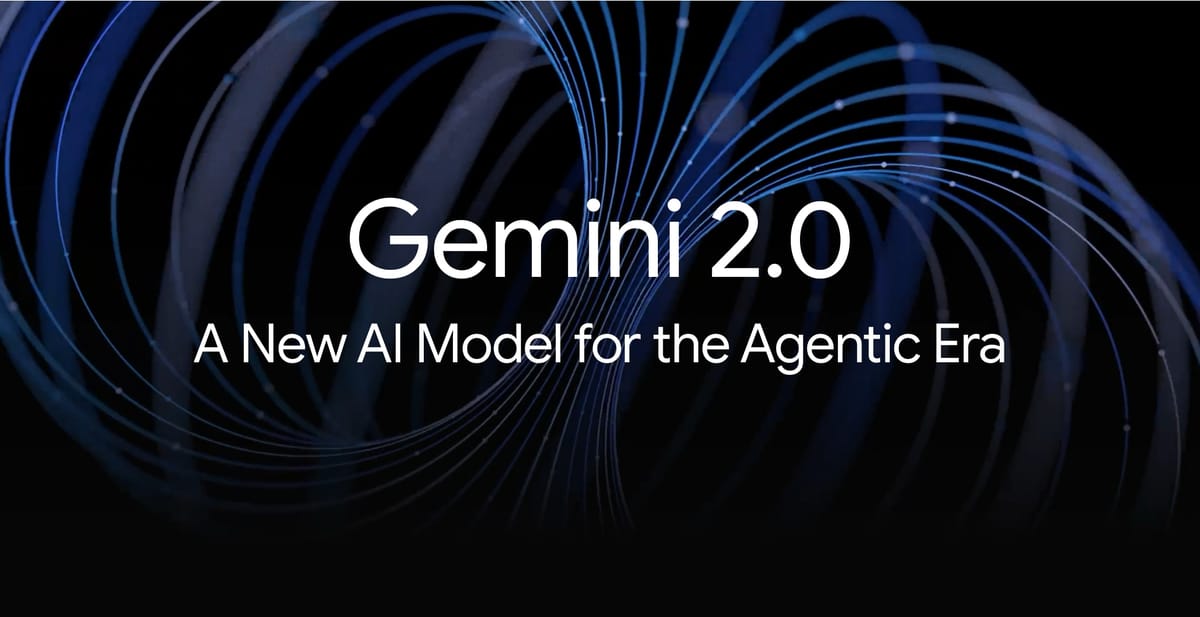
Today, Google launched Gemini 2.0 and took its first foray in to the era of AI agents that can perform complex tasks across physical and digital environments. By leveraging multimodal capabilities, tool integrations, and advanced reasoning, Gemini 2.0 is laying the groundwork for agentic experiences. To show off the potential of the new model, the company previewed three impressive new AI agents.
Key points:
- Gemini 2.0 Flash enables agents that interact with tools, environments, and users dynamically.
- Combines image, text, audio, and tool-based reasoning to power AI agents.
- Google’s Project Astra, Project Mariner, and Jules demonstrate the model’s versatility.
- Safety and user control remain central to Google’s approach.
First, what are agentic experiences?
Agentic experiences refer to AI’s ability to not only understand user instructions but to autonomously act on them within defined parameters. Gemini 2.0’s advanced context understanding and multimodal output capabilities make this possible. Unlike simple chatbots, these AI agents can execute plans, interact with real-world environments, and assist users in achieving complex goals.
Check out these Prototypes
Google is exploring agentic possibilities through several cutting-edge projects:
- Project Astra: We first saw Project Astra at Google IO earlier this year. This universal AI agent leverages multimodal understanding to converse naturally, use tools like Google Search and Maps, and provide personalized assistance. With Gemini 2.0, the agent gets multilingual dialogue, better memory retention, and enhanced latency for near-human interaction speeds.
- Project Mariner: Focused on browser-based tasks, Mariner uses multimodal reasoning to analyze web elements and complete end-to-end tasks, such as filling forms or conducting research. This prototype integrates user oversight to ensure safe and accurate operations.
- Jules: Jules operates within GitHub workflows to help developers with coding tasks. It plans, executes, and reviews bug fixes, enabling developers to offload repetitive tasks and focus on creative problem-solving.
Real-world applications
Agentic experiences powered by Gemini 2.0 are poised to transform industries:
- Education: AI agents can tutor students using dynamic, multimodal content, including voice and images.
- Gaming: Real-time companions can guide players through challenges using contextual insights from in-game activity.
- Workflows: Developers and professionals can rely on AI assistants like Jules to handle tedious tasks, enhancing productivity.
- Accessibility: Agents can provide tailored support for individuals with disabilities, such as real-time translations and task navigation.
Balancing innovation and responsibility
As Google ventures into the agentic era, it is prioritizing safety, transparency, and user control. Gemini 2.0’s prototypes undergo rigorous risk assessments and include safeguards like session memory controls and human-in-the-loop oversight. For instance, Project Mariner only interacts with the active browser tab and requires user confirmation for sensitive actions.
Google is also addressing broader challenges, such as preventing misinformation and ensuring privacy, by embedding robust safety mechanisms like SynthID watermarks in image and audio outputs.

Looking ahead
Gemini 2.0’s agentic capabilities are still in their experimental phase, but the potential applications are vast. Google’s early prototypes offer a glimpse into a future where AI agents seamlessly integrate into our lives, enhancing productivity, creativity, and accessibility.


